Tasting Some Of The Sensational Latest Releases Of Australian Superstar Winery Henschke
by Ken Gargett
One of the problems with having an iconic wine among your offerings is that other, equally worthy wines are often overlooked or diminished in the eyes of wine lovers. But such is life.
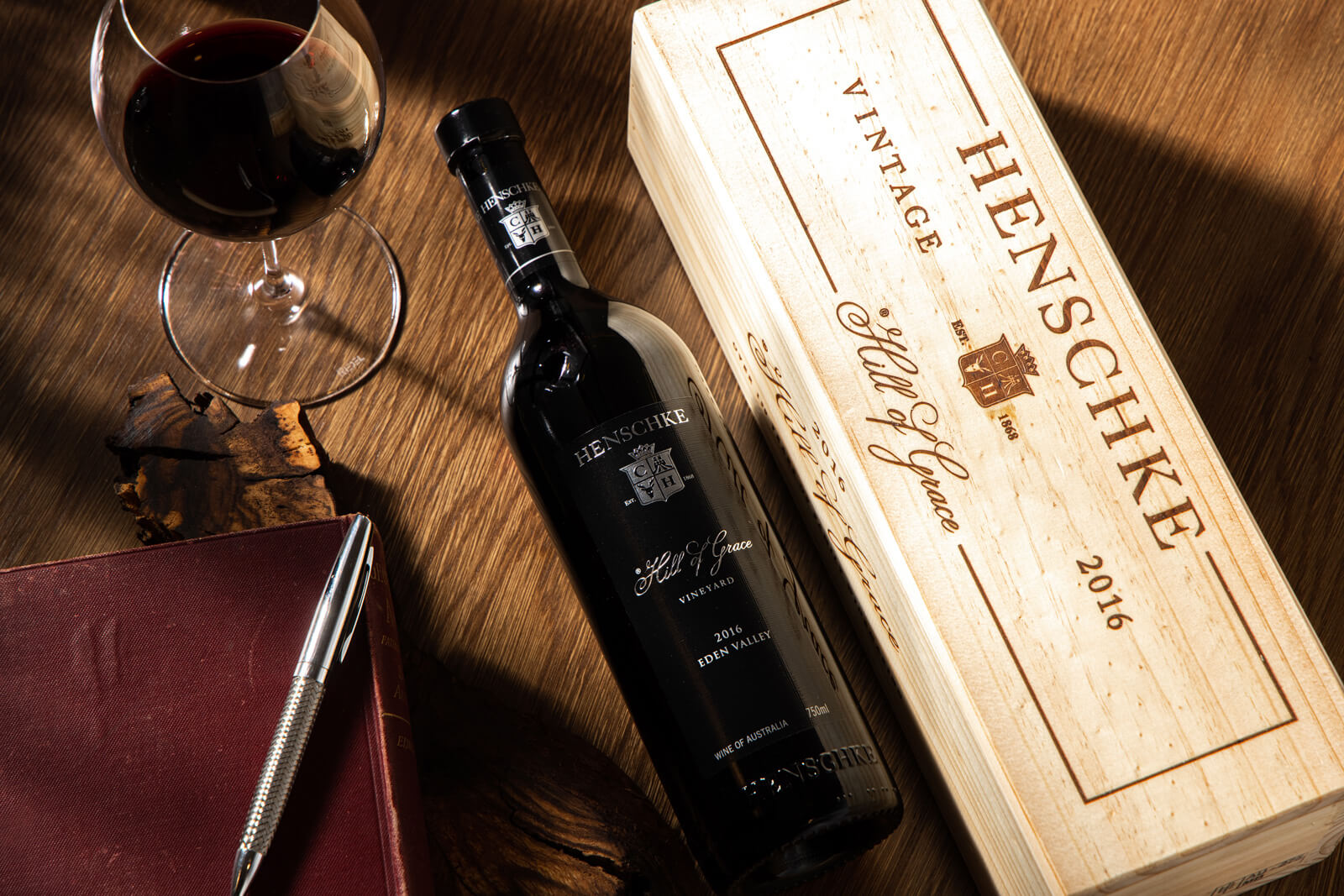
Henschke Hill of Grace 2016 (photo courtesy Duy Dash)
With its latest releases, Australian superstar winery Henschke has moved to align the vintages of several of its top wines, all Shiraz: Wheelwright, Mount Edelstone, Hill of Roses, and the legendary Hill of Grace.
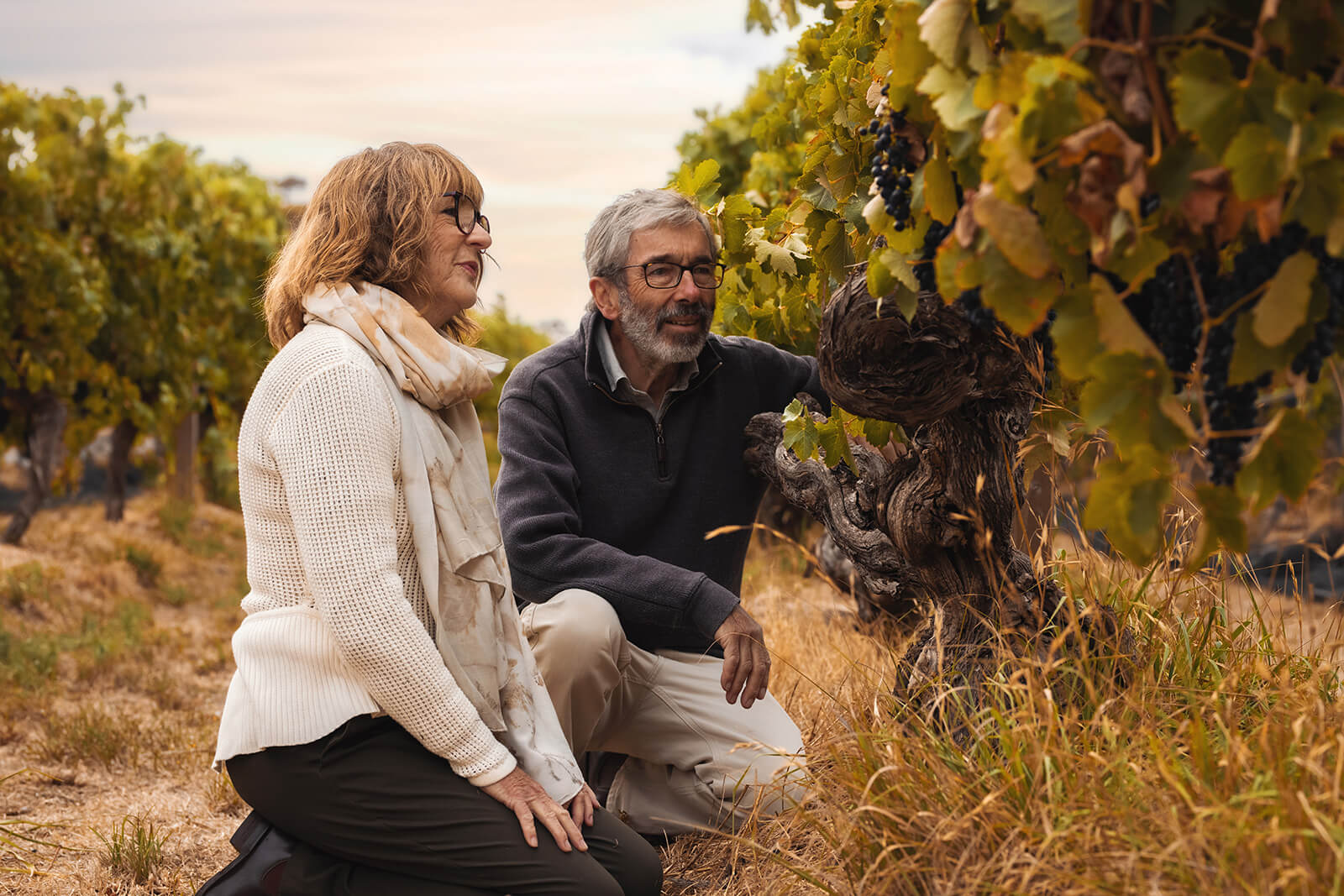
Prue and Stephen Henschke (photo courtesy Duy Dash)
Perhaps the stars have also aligned as that vintage is 2016, an exceptional one in South Australia’s Barossa and Eden Valleys.
In the past, Hill of Grace was always a year or two later than the others, and that alone cemented its position as the flagship. Of course, price also plays a major role in perception. With Hill of Grace not that far short of a grand per bottle – at least twice that of the nearest (Hill of Roses at AUD$400 plus) – it’s hard to convince anyone that Hill of Grace is not on a pedestal over its stablemates (and out of reach for most wine aficionados).
Of course, the Henschkes could always set equal pricing across their top wines but that might run headlong into commercial reality. Put simply, wine lovers around the world see Hill of Grace as one of Australia’s greatest reds (Penfolds Grange obviously the other).

Henschke Hill of Grace vineyard in the Eden Valley (photo courtesy Dragan Radocaj)
The top Henschke reds from this release come from 2016 and 2018, two exceptional vintages. A warm, ripe and generous year, 2016 produced nearly as much Hill of Grace as did 2015 – and way more than both ’13 and ’14.
The 2012 vintage exceeded them all, while nothing was released from 2011; 2018 should be a superstar, while 2019 does not share quite such an exulted reputation. Some pleasant wines may have been produced in 2020, but the specter of smoke taint hangs over all (vineyard and even grape selection counters this to varying degrees, but it is not a vintage to which anyone is looking with much anticipation).
A very different story will unfold for the 2021 vintage. All reports coming out of South Australia suggest that this will be a vintage for the ages. The Henschkes are certainly very pleased. The downside is that it will be another five years before we see these wines, though there will be plenty of others released earlier.
In the past, I have tended to focus solely on the great Hill of Grace, understandably so. However, such was the quality across the board of Henschke’s collection, it seems only fair to take a broader view.
An overview of Henschke wines
Johann’s Garden 2018 (AUD$60): From the Barossa, this is a Grenache Mataro (known elsewhere as Mourvèdre) Shiraz blend in the tradition of the great southern Rhônes, and it is singing. A blend of 77 percent Grenache, 19 percent Mataro, and 4 percent Shiraz. The grapes are vinified individually and then matured in mature hogsheads for eight months before blending and bottling.
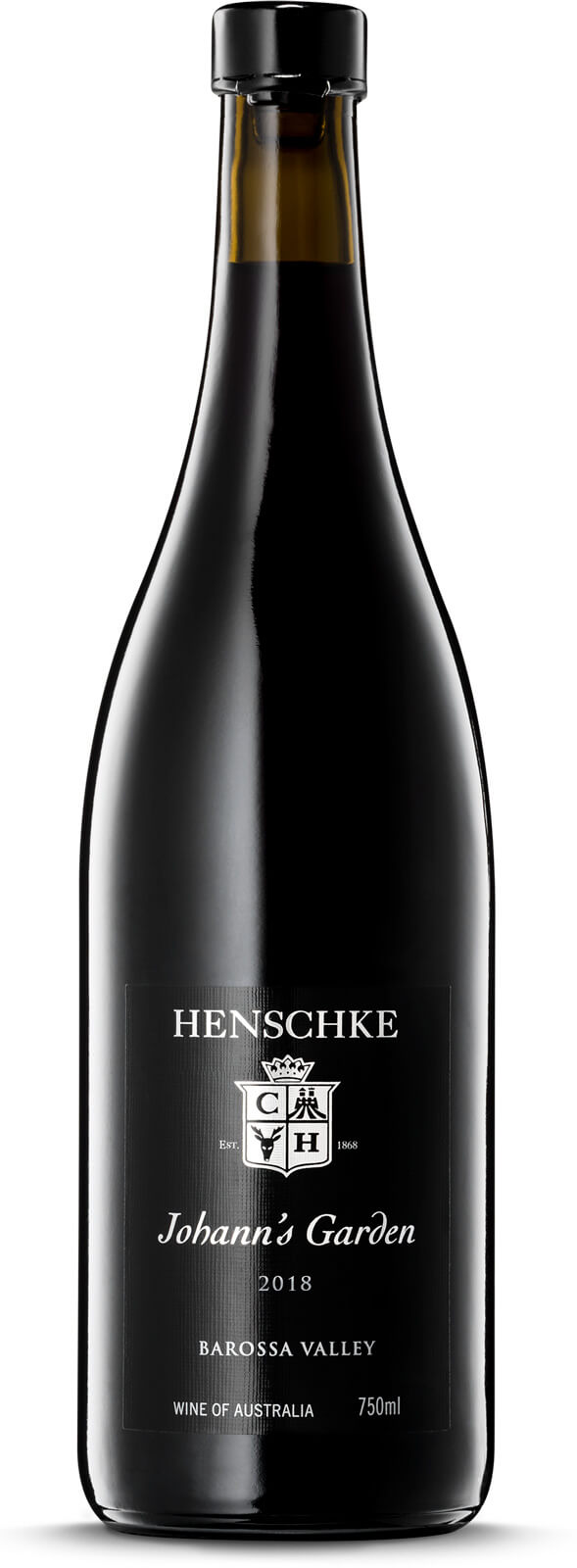
Henschke Johann’s Garden 2018
I asked Stephen Henschke if he had ever made a better Johann’s Garden and, while he loves what he has from 2016, he did mention both 2002 and 2004, both of which won Best Grenache (or Grenache blend) in their respective Barossa Shows.
I’m happy to concede that it is the finest for a decade. The first vintage was 1996, coming from an old Grenache vineyard that Stephen’s uncle was about to pull out. Stephen suggested that perhaps he should take a quick look and loved what he saw – wonderful old Grenache vines. There was to be no vine cull here.
I really loved this wine (it is entirely possible that I have a glass of it within reach as I type, but then it is entirely possible I have a glass of each of the range from the tasting table – the problem is choosing which one to enjoy, very much a first-world problem if ever there was one).
An entrancing red-purple color, the wonderful aromatics exploded from the glass from the moment the wine was poured. Elegance personified. Exquisitely perfumed, full of spices with cinnamon, a hint of sage, vanilla, cherries. Ripe notes and a lovely sweet core of dark fruit. Chocolate. Wonderfully supple on the palate, seamless with the silkiest of tannins. Great length.
Finely crafted, this wine lingers with intent. It has a great future, but one wonders how it gets better. Different, perhaps, but surely not better? Finishes with just a slight savory note. Just wow!
For me, 97. Sure, a high score for immediate gratification and if an insistence for a long and classical future is compelling for you, then you may drop it back a smidge.
One minor detraction – the Henschkes moved from cork many years ago and use both screwcap and Vinolok glass closures. Trials of the latter began in 2004. The Henschkes consider it their “cork for export,” and it seems well accepted. Personally, I much prefer the screwcap.
The name “Garden” is how the early Silesian pioneers referred to their vineyards (believed to come from the German term Weingarten).
One final point. Wherever one ranks this in the latest collection, it is surely far and away the “value buy.” Daylight second.
Keyneton Euphonium 2016 (AUD$62): A Barossa/Eden Valley Bordeaux-ish blend of Shiraz (57 percent), Cabernet Sauvignon (30 percent), Merlot (7 percent), and Cabernet Franc (6 percent), the wine spent 18 months in a mix of new (13 percent) and older (87 percent) hogsheads, 29 percent American oak and 71 percent French.
Blacks and purples. An intriguing nose with cigar box notes, some smoky campfire characters, dry herbs, barbecued meats, dark chocolate, coffee grinds, and even some red apple touches. Spices, including pepper and sage. Still quite youthful. Finishes with some pleasing sour cherry flavors, dark berries, and more cherry/chocolate. This has slightly more chewy tannins than did the Johann’s Garden. Has decent length and years ahead of it. Should be improved by another five to eight years under its belt. 93.
Why Euphonium? As far back as the late 1840s, the Henschkes, well known for their love of music, were part of the musical community in the village of Keyneton. In 1888, Paul Gotthard Henschke founded the Henschke Family Brass Band. Among the popular wind instruments was a B-flat euphonium, which had been made in Leipzig, Germany, in the famous Zimmermann factory in the late nineteenth century. So, Euphonium it is.
Tappa Pass Shiraz 2018 (AUD$115): Always a favorite and from such an exciting vintage, much anticipation. For me, a very fine Tappa Pass. Perhaps not Henschke’s very best, but certainly up there and more than worth inclusion in any serious cellar.

Henschke Tappa Pass Shiraz 2018
From a pair of vineyards, including “Uncle Jack’s Shiraz vineyard, planted in the fifties,” the Henschkes usually find the resulting wine offers blueberries and plums. For Stephen, although Henschke is very much focused on what single vineyards offer, as soon as he saw these individual components on the tasting bench, he knew that they belonged together. No doubt, it was the correct decision.
The two vineyards share 70-year-old, low-yielding Shiraz vines from the vineyards at Tappa Pass and Light Pass. The soils, both red-brown earth to terra rosa, are “low-fertility Neoproterozoic soils,” an amazing 542 million years old. The wines are vinified in traditional open-top fermenters and then rest in 24 percent new and 76 percent older French hogsheads for 18 months.
Color of ripe cherries. Slightly more restrained than expected. And for me, a little more rustic. Warm earth, spices, chocolate, black fruits, leather. Dense with a hint of animal skins. Some good complexity here. I asked Stephen about these characteristics, but it was not something he had encountered in his tastings. Subsequently, I went back to my bottle.
For me, these characters were still present (is it possible that my bottle was slightly different? Always possible – less so with the move to screwcaps, of course). But one can only report on what one tastes, and I should say that I found it a seriously impressive wine. Good balance, eight to ten years of improvement ahead of us. Excellent length. Worth noting that it impressed even more after 24 hours open.
For me, this is an excellent Tappa Pass, if not the very pick of them. 94.
The success of the 2018 vintage was especially pleasing for the Henschke family, who celebrated a 150th anniversary.
Mount Edelstone Shiraz 2016 (AUD$225): A single-vineyard Shiraz from the Eden Valley, this is perhaps the Australian wine that has offered more vintages than any other. And yet so often languishes in the shadow of Hill of Grace. It deserves so much better, especially when one sees what a stellar effort hails from this celebrated vintage. Indeed, one could argue, had Mount Edelstone not proved a success, there may never have been a Hill of Grace.
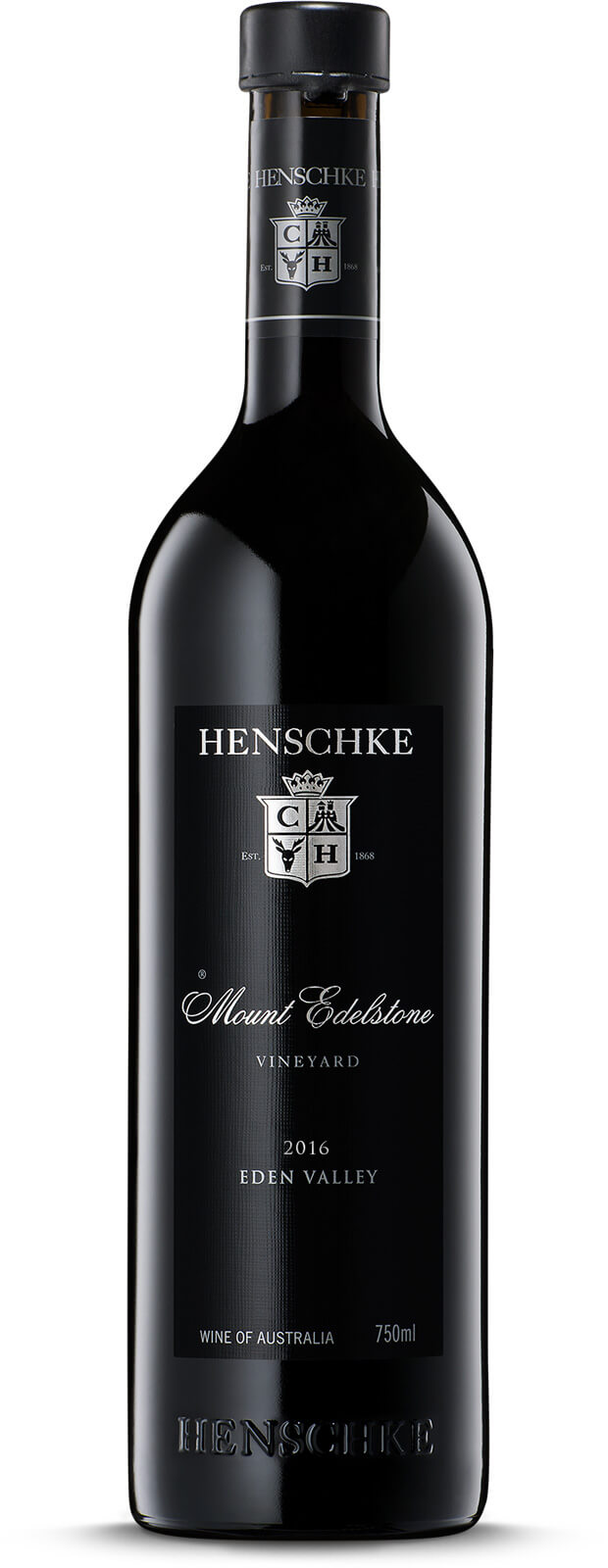
Henschke Mount Edelstone Shiraz 2016
The Mount Edelstone vineyard was planted in 1912, 104 years before this vintage. First vintage was the 1952 made by Cyril Henschke, Stephen’s father. He purchased the vineyard from the Angas family in the 1970s, though the Henschkes had access to the fruit long before. The wine is matured in 80 percent French (97 percent new) and 20 percent American (3 percent new) hogsheads.
Blacks and purples. A glorious nose. Soy, beef stock, leather, sarsaparilla, violets, black fruits, chocolate. Black cherries, more chocolate, cassis. This is wonderfully complex with deep aromatics. The structure, complexity and length, let alone the array of flavors, suggest that this is a special wine.
Beautifully integrated oak. Seamless. Concentrated and yet it dances. A magnificently elegant wine. Fragrant and with terrific length and balance. This has decades ahead of it. Satiny tannins. For me, 98.
Speaking to Stephen, he notes how good the 2015 was as a “classic” style, whereas the 2016 is from a warmer vintage and exhibiting more plushness.
This is one of the very great Mount Edelstones.
Hill of Roses Shiraz 2016 (AUD$415): Once it seemed to me that this was very much a unicorn wine. Heard of it but almost never seen. Stephen sees it as something to reward loyal cellar door customers and a few on-premise sites. It is basically Hill of Grace in waiting.
This comes from the vines in the Hill of Grace vineyard that have not yet attained that status, largely because of age – these vines are around three decades old, still considered too young, though it can’t be long before they ascend (they will need to be at least 35 years of age to qualify under the local charter as “Old Vines”).
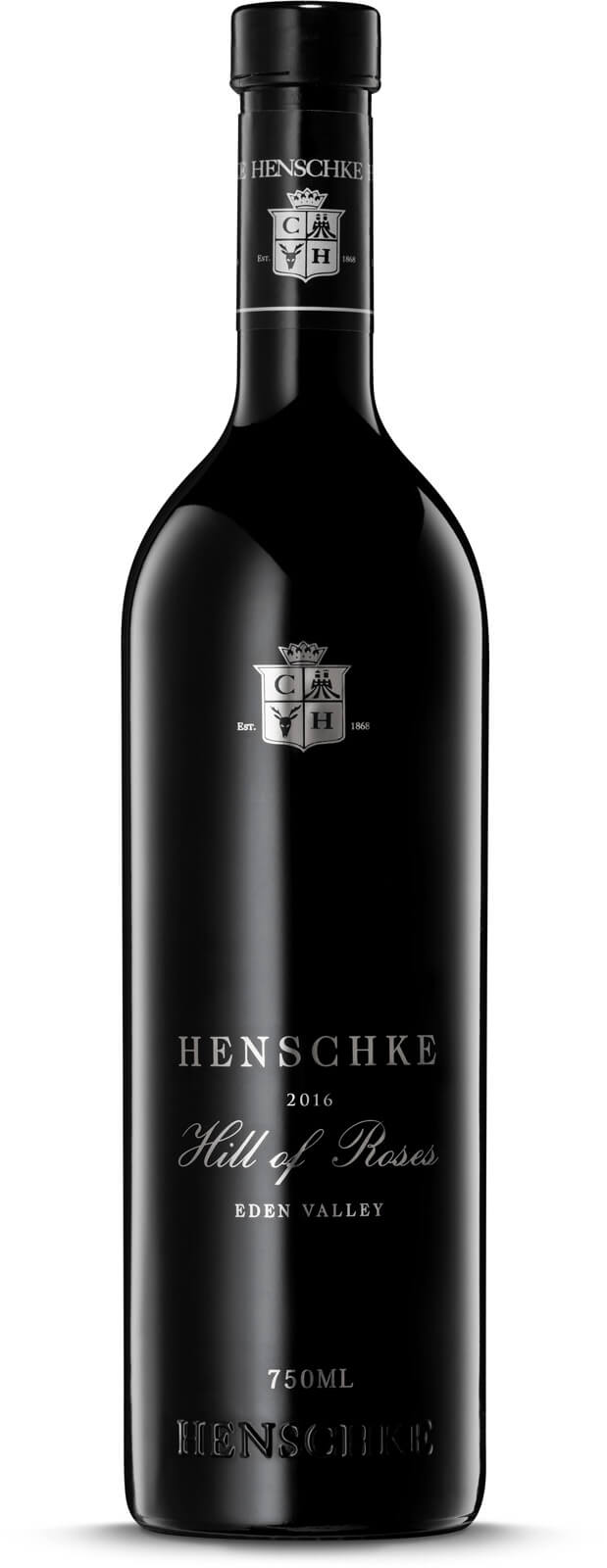
Henschke Hill of Roses 2016
As Stephen says, the tasting bench will tell the tale. The day the Henschke team looks at a sample and has no doubt that it belongs in Hill of Grace, only to discover it to be from the “Roses” section, is the day that they will know that these vines can contribute to Hill of Grace.
The wine rested in 30 percent new and 70 percent mature French hogsheads for 18 months. First vintage was 2001 when the vines in the Post Office Block section of the vineyard were just 12 years of age.
This vintage has some serious concentration. Even a touch burly. Ripe and plush – it does seem that Stephen’s thoughts on the 2016 vintage being a little plusher than some are spot on.
Flavors of chocolate, florals, black fruits, coffee beans, possibly a touch of five-spice? This has very fine tannins. Length that maintains its intensity. Surely, it has a good 15 to 20 years ahead of it. A really fine Hill of Roses. For me 96, and that will surely rise over time.
Worth noting that there would be very few wineries in Australia, indeed anywhere in the world, who would not be proud to present a wine like this or Mount Edelstone as their flagship. And yet here they all fall in the immense shadow of Hill of Grace.
Hill of Grace 2016 (AUD$890) – One of the world’s most iconic wines, from a great vintage – much expected. But the Henschkes never let you down. Another stunning Hill of Grace. Seems to have been a while since that was not the verdict.
The story is well known and oft told. A small single vineyard near the famous Gnadenberg Lutheran Church in the Eden Valley planted with pre-phylloxera vines brought to South Australia in the mid-1800s. The oldest vines, the “Grandfathers,” now exceed 160 years in age (who’s New World now, Europe?).

Henschke Hill of Grace Shiraz 2016
They are under the care of Prue Henschke, one of Australia’s most highly respected viticulturalists. The oak, hogsheads, is 85 percent French (83 percent of which is new) and 15 percent American (17 percent new), in which the wine spent 18 months.
The Henschkes always like to come up with a title or slogan for the wine/vintage. This time? “A Congregation of the Ancients.” Some titles work better than others.
This is the fifty-ninth vintage for Hill of Grace, though only the fifty-fifth release – none was made in 1960, 1974, 2000, and 2011. Recent vintages have been less than generous – one barrel in 2003 and minute quantities in 2013, 2014, 2019, and 2020. As mentioned above, 2021 looks to be a vintage generous in both quality and quantity. In quality, it has been linked to such fine years as 1988, 1994, and 2008.
The wine itself? Deep, intense, opaque blacks and purples. Still so young, although one thing immediately apparent is that the tannins seem delightfully mature. Time will reveal more of what this wonderful wine has to offer and perhaps nudge it up the next point. To be honest, the score was a tossup and really only given to allow the inevitable improvement this wine will see to be properly reflected.
Finesse, balance, elegance, power, a wine dancing on the knife edge of intensity and grace. Seamless, such a gloriously supple texture, and amazing length. Yet all the time, one is reminded just how youthful this wine is. There is complexity, but undoubtedly not to the extent that will be apparent as this wine unfolds over the next decade.
Spices, black fruits, cassis, fresh leather, blueberries, sage, coffee beans, soy, even a whiff of cocoa powder. Finely integrated oak, giving the wine a creamy note. The flavors come in waves and are carefully held in place by impressive structure and those silky tannins.
The finish persists endlessly and all throughout maintains its intensity. Thirty years? Forty years? Who knows, but it hardly matters. Provided your cellaring conditions are top notch, this should age and improve for as long as you want. 99.
For more information, please visit www.henschke.com.au.
You may also enjoy:
Peter Lehmann’s Masterson Shiraz: The Newest ‘Old’ Star Emerging From The Barossa Valley



Leave a Reply
Want to join the discussion?Feel free to contribute!